
The post POTD: Traffic Control … Taken Seriously appeared first on The Firearm Blog.

The post POTD: Traffic Control … Taken Seriously appeared first on The Firearm Blog.

The post LASER TAGGING: Firearm Laser Engraving And Marking – An Introduction appeared first on The Firearm Blog.
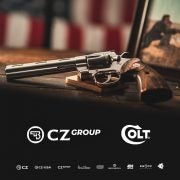
The post BREAKING: CZ Acquires Colt Holding Company appeared first on The Firearm Blog.
As Americans living in 2020, we each are searching on our own for a defining moment. We all do this to some degree, either actively in the pursuit of grand goals, or passively, waiting for life to bestow some sense of meaning. We do this with events too, attempting to put into perspective what something like the death of George Floyd or the subsequent burning of the Minneapolis Third Precinct means for America. These considerations typically take place in the aftermath of such events, invariably influenced by pundits, politicians, and people seeking to control narrative. In the moment, however, neighborhoods came together to protect local businesses and their own homes — and spontaneous Emergency Networks spread across the city. As a Minneapolis native, this first-hand narrative represents the antifragility of the American people.

Whether in solidarity or for camouflage, many businesses marked their own properties with the same phrases that those…
As the façade of public safety went up in flames to the sounds of chanting, the eerie nature of the moment didn’t have time to sink in. This wasn’t a nightlong siege of an embassy in a foreign country — this was home. A phone call interrupted. Was it another family member? A friend calling to check in? Or was it word of something new?
In the background, flames leaped from buildings and smoke plumes melted into a dawn skyline. For miles, the smell left a slight metallic taste in the mouth. It wasn’t recognizable, but it was familiar.
The city, this city, our city wasn’t the same in the morning air. All night we were monitoring, watching, and sending out patrols. Little did we know by the end of the week that we’d be convoying nursing mothers away from their homes to safety. Was this Minneapolis, or was it Mogadishu?
We were no longer measuring this event in hours, but days. The previous 24 hours we watched what started as protests turn into burning buildings and a form of looting that looked too relaxed to be anything but surreal. A man in socks and sandals stumbled out from the rubble of a smashed employee entrance with a carton of eggs, some cooking oil, and a half-eaten candy bar. With a casual air, he stepped around a barrier, chuckled at the hull of a burning car, and disappeared into the residential streets. A few miles away, men with body armor and carbines sat inside cars in grocery store parking lots and outside apartments to protect businesses and the community.
Sorting through and qualifying the information escalated to a necessity, as rumors spread like wildfire through social media and news outlets. The white supremacists were coming to town — or was it the Black Panthers? Boogaloo boys or antifa? Believable? Yes, but not nearly as relevant nor immediate as the gas station burning at the end of the block. The National Guard was now using live ammunition? A quick check with a friend in the chain of command said otherwise; another case of bad information reaching further and faster than fact.
It didn’t take long for rumors to breed distrust, with speculation spreading fear that some infamous “them” could be coming to town to take part in the trouble. But how could we verify who they were or where they were coming from, or even where they were going? And then there was the matter of who we were. Were we a group of concerned friends? A rescue operation? The latest evolution of the neighborhood watch?
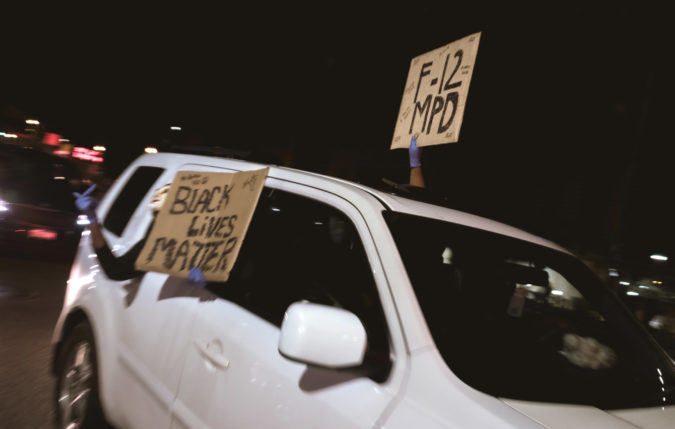
A caravan of impromptu parades streamed across the city, through neighborhoods, blocking traffic. The closer you got to…
On the couch rested a plate carrier, hearing protection, and a rifle. Half of the dinner table became a command center, busy with communication on every channel, texts, phone calls, live video, and each social media platform a blur of new information that had to be evaluated.
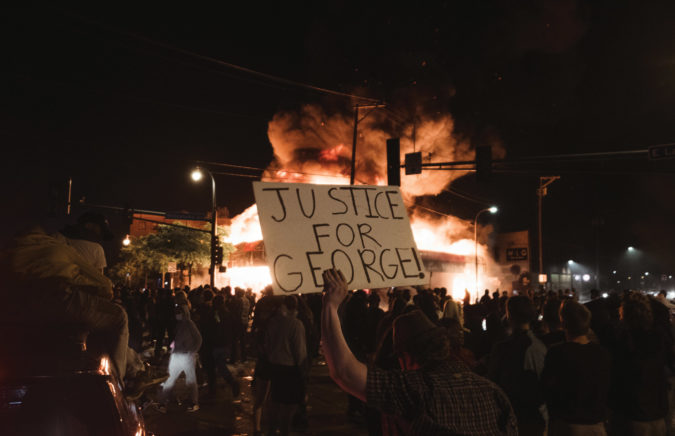
Across the street from the 3rd Precinct, a family owned liquor store burned throughout the night as its merchandise was…
When it all started, we simply called each other. Some of us were friends, others family, some as distant as former colleagues or a valued professor from years ago in college. A former coworker had left town, but he was monitoring the police chatter in our area through a scanner. Establishing the network was spontaneous. What came next couldn’t be. We had to systematize our communication — quickly — before it became too jammed up to do any good.
Nicholas Nassim Taleb, in his work Antifragile, observed that highly centralized organizations were prone to collapse when the head was cut off from communication. The world of Special Operations long ago incorporated this principle by maintaining an unwritten standard that each member of the team must be capable of performing the duties one or two levels above and below themselves. In emergencies, situations will escalate from bad to catastrophic when arguments over leadership take precedence over the threat at hand.

As the looting continued, it became more and more banal. Soon windows were smashed just for the hell of it.
An emergency network stands apart by defining itself primarily around an area of operations, not a rank structure. It’s not an organization that needs hierarchy, but a team that requires cohesion. Spread across Minneapolis, each person represented a node, a point to gather and cross-reference any information that popped up. Some brought unique expertise — a retired police officer, a member of the National Guard, a nurse, another who was social media savvy. No bunkers, HAM radios, or bug-out Hilux imports in sight, all communication took place over cell phones and computers. By establishing various information-specific group text messages or chat rooms, we isolated pertinent, actionable information that could be shared across the whole group while limiting the noise of rumors and conjecture.
Next, we used tools like Google Earth to clearly define and disseminate where each person lived to determine key routes of travel and the greatest danger areas. People could drop a pin where they lived, and if they saw something first-hand, it could make its way onto the map. If a building started burning, it was shared with the group. As time progressed, various streets, roads, and highways would be blocked by police, protesters, or riots, and that’d determine how we’d get people out of a bad place.
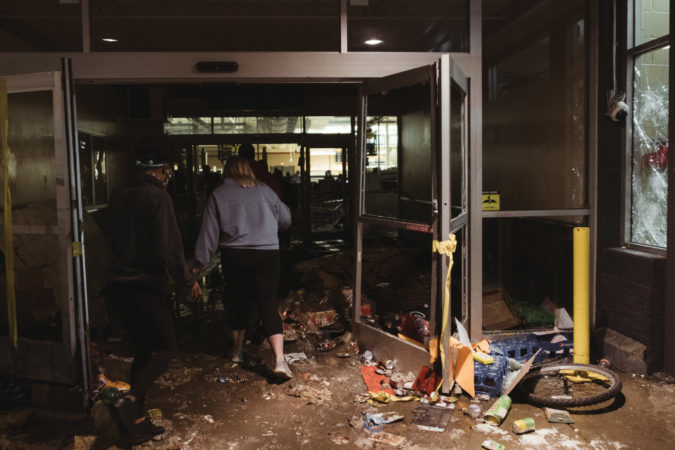
Those looting the stores rarely looked like comic book villains. Many came just for the spectacle and went home with a…
When establishing a network as a crisis is in progress, the decentralized nature of the group begins naturally. By self-regulating the various streams of communication, the network prevents itself from getting too crowded, allowing the most pertinent information to stay on the top. By reserving phone calls for immediate threats, part of the team can get rest knowing that if they were needed the ringer would wake them up. Just as some streets set up shifts to keep watch over the neighborhood, so could the network look out for each of its members while some slept for the first time in 36 hours.
For the third night in a row, the city burned with no end in sight. As the skyline began to give way to the gray of dusk, we wondered if tonight we’d see it aglow by fires in this neighborhood. The rumor coursing through the wires and waves of the city was that tonight the rioters were going residential, now that the police precincts had hardened their defenses and the businesses worth looting had been stripped bare. All day, pallets of plywood emptied out of lumberyards for boarding up gas stations, liquor stores, and churches within a 20-mile radius.
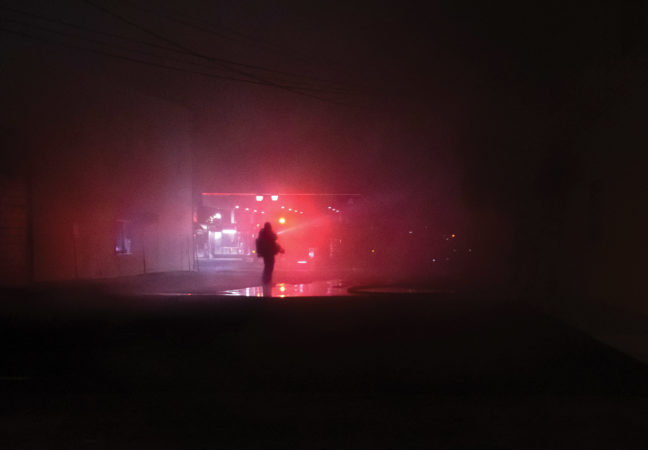
Some parts of the city were wholly abandoned by the fire department, where in others struggled long into the night.
A computer had been synced to relay text messages, as it took too long to type on a phone keyboard. A screenshot came in, this time a social media post: THE WHITE SUPREMACISTS ARE MARCHING SOUTH FROM NEW BRIGHTON. If that were true, it would be a problem. Could this information be verified? We didn’t care about who they were, only if the threat was real.
We had more information at our fingertips than we could handle. In order to turn it into OSINT (open-source intelligence), or actionable information, we needed a way to evaluate what came in. People flocked to Minneapolis, some for a chance to get in on the action, others to catch the spotlight for political gain, still more to protect property and people from the fires, or to watch what felt like history in the making. All the attention brought a spotlight and the struggle for it.
The battle over the streets was matched with a battle over the headlines. That distinction meant everything to those who lived where others fought. In the papers and across the web, people argued over who was starting the fires, or who was coming to town, but to us, it didn’t matter — we sent an armed escort to the home of a National Guardsman who was receiving threats. As the street violence continued to escalate, he’d been called in, leaving his wife and 1-year-old child home alone. Despite the curfew, they were quickly and quietly escorted to the safety of family outside the city.
It wasn’t the alarm of white supremacists on Twitter that drove us to action, but the reports coming in from government sources and confirmed by our own people on the ground. When rumors of threats began to spread, it became the responsibility of each person to verify what they heard and dismiss anything that couldn’t be confirmed. In this case, the National Guard was briefed on the expectation for the riots to move into residential areas, and we considered it actionable intelligence when multiple vehicles were spotted driving through without license plates. The previous days’ reports and videos floated across Minneapolis, depicting cars stripped of tags driving through in search of soft targets to quickly smash-and-grab them when the police were nowhere in sight.

From their porches, streets, and rooftops, citizens watched the chaos unfold, holding down their little section of…
The saying “trust but verify” pertains to more than just leadership strategies, especially for information that could qualify as OSINT. An emergency network remains flexible by operating with a decentralized structure, but it relies on a systematized approach to information and the responses. New information is sifted according to its credibility and then assigned triggers that warrant specific actions. Social unrest seized Minneapolis in a matter of hours, so the establishment of an emergency network was both organic and reactionary. However, once the channels of communication were established, it was time to become proactive. This meant forming an amalgamation of tactics and standard operating procedures. With people remaining in their neighborhoods, sometimes minutes and sometimes miles apart, we needed to know exactly when it was time to act and how to act.
As we tracked the movement of the riots, mapping out the locations of burning or looted buildings, we were faced with this question. So far, none of us had been immediately threatened. Our hatchets sharp, powder dry, and plate carriers loaded, our team was at the ready, but as the violence escalated, it stayed away from our doorsteps. Our greatest danger wasn’t a torch-wielding mob — at least not yet — but rather the weariness of endlessly waiting for a threat to manifest, hoping that we’d have the mental fortitude to make wise decisions.
Tangible triggers dictate appropriate responses. When someone identified vans without license plates roving around their neighborhood, someone outside of the danger area would drive to their location and provide security for the night. If someone needed food but couldn’t leave their home, another would provide a meal. In the event of a nearby fire, people with trucks were at the ready, fully knowing the hazard of entering a part of the city barred from police, medical responders, and even the fire department.
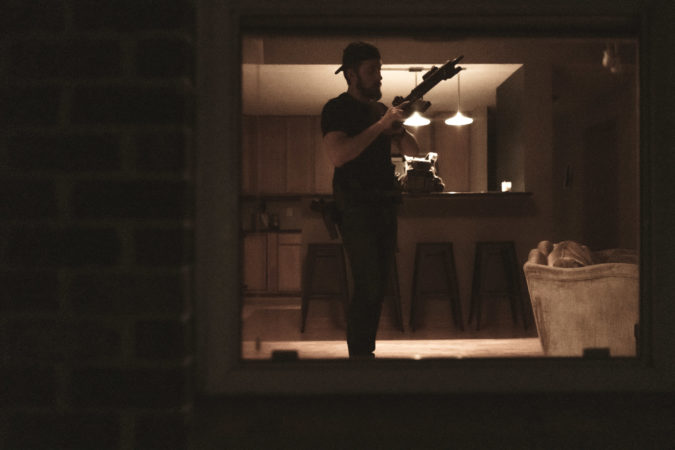
Maintaining the “Minnesota Nice” exterior as some marched to defund the police, others prepared for the crime wave…
By establishing triggers, each tied with predetermined response, the team moved from a reactive posture to proactive planning. As the unrest progressed, fear spread through rumor gave way to a systematized evaluation of information. This evolved further to make room for the network to look for ways to improve our position, instead of waiting for bad news to come home.
In the weeks following the riots, after the fires had long gone out and the smoldering wreckage of businesses began to assess how or if they could rebuild, some looked to politicians to save them from the aftermath. Our network, however, remained in place to look after our own. No one was coming to save us, and this was our home. This city was ours, but its eyes had grown wide with suspicion as it questioned who could be trusted. Neighbors debated who started the fires or looted local businesses, and the machine of media turned its attention from reporting on what it saw to arguing over which politician was to blame.
Behind the scenes, men and women stood up to look after each other, not by obligation but by choice. And it was that conscious decision that set them apart. No longer burdened by a search for meaning, they had found theirs — not in trying to identify victimhood, but to act and make themselves more able to act. In Minneapolis, behind the politics and the posturing, these emergency networks still stand, defined not by what happened to them, but what they were doing when no one was looking.
Photography by Samantha Lauraina
[Editor’s Note: This article first appeared in RECOIL #52]
The post Rapid Emergency Networks: Porch Vikings Amidst the Minneapolis Riots appeared first on RECOIL OFFGRID.
Estimates have put the number of new gun owners in 2020 to be somewhere over 5 million. In a time of growing threats to public safety and stigmatization of law enforcement, it’s finally dawned on many that protecting themselves and their family has never been more important. By the time you read this, the election will be over. No matter the results, increased instability will be par for the course. With the media, activist groups, and countless others fanning the flames of civil unrest, the next question becomes, who can teach you the skills to defend what’s important and the discretion to use them righteously? Guys like Byron Rodgers.
When you hear the term “executive protection” (known colloquially as EP), images might come to mind of some shredded guys with pressed suits, radio earpieces, and mirrored sunglasses following around celebrities who can afford the luxury of private security. Sure, Byron checks those boxes, but his résumé goes beyond protecting wealthy clients and teaching others who want to enter the private security industry. Author, veteran, podcast host, consultant, trainer, and creator of programs such as the Hard Skills Intensive and Protector Symposium are just some of the titles that make him as academic as he’s enthusiastic about helping everyday people help themselves.
The increased risks in our world have convinced many that being self-reliant isn’t only smart, but also imperative. Byron made it his mission to teach citizens from all walks of life how to sharpen the survival instincts that are part of everyone’s DNA. Think of him as part motivational speaker and part Roman general. We spent some time getting to know what motivated Byron to turn the skills he’s honed during his executive protection career into programs accessible to the average citizen.
RECOIL OFFGRID: Tell us about where you grew up.
Byron Rodgers: I was born in the Bahamas and grew up in Washington state. I spent the summers with my father in the Bahamas spearfishing, swimming, and doing all the island stuff, but I’d spend the winters with my mom in Washington, so I had a hybrid situation growing up. The Marine Corps brought me to Cali, and I opted for the infantry as an 0351. Then, from, there did my two deployments to Iraq.
In my spirit, I knew I was going to do what I ended up
doing in the executive protection industry, so I followed that inner voice. About three months before I got out of the Marines, I was working as a bouncer and was bussing tables just trying to be a good dude. This guy, Luke Agajanian, who became a buddy of mine looked over and told me to get a couple different permits, give him a call in a few weeks, and he’d show me how to make a lot more money doing what I was doing. That was the beginning of my executive protection career. Next thing you know, I was at a job interview in Beverly Hills talking to a client and away we went.
What was your experience in the military like?
Byron Rodgers: I was in for four years. It was like juvenile hall meets Lord of the Flies [laughs]. These guys had just gotten back from the battle of Fallujah. I got really good training, and my big brothers taught me how to fight. My first combat experience was very surreal. We were launching the invasion of Haditha, and we were out there at 3 a.m. It was pitch black, and I remember I was staring at the city and the power to the whole city just shut off. As we got ready to invade, an Army unit flew past us trying to get into the city first. We tried to tell them not to cross because there was a mine field. They went by us in a Bradley and got blown up. I remember hearing this explosion and hearing these guys and the rounds cook off. I was thinking, this doesn’t even look real. I heard this voice inside me say, you don’t really know what real is yet, son. [Laughs]
I was thinking, just grab yourself by the balls as we shot APOBS up into the city, which are linear explosive charges that shoot out on a rocket in a straight line and blow a trench in front of you. After that, the tanks trailed in that trench, and we ran in behind the tanks and invaded the city. We were going house to house to the sounds of women screaming, babies crying, and rock bands playing on big PSYOPS speakers. It was unlike anything else I’ve experienced. I got hit by a number of different IEDs, shot at by snipers, and it was a good taste of war. I got rocked a few times real good and had like an out-of-body experience and thought I was dead.
What got you interested in executive protection?
Byron Rodgers: Upon exiting the Marine Corps, I was at a crossroads thinking about what I was going to do. I knew I was trained to hold a gun for someone, so I wondered what my options were. I could contract overseas or be a cop. Those were the only two things I knew of. There was this scary period of life where like I had to make a decision, which is why, with my school, I try to make it as easy as possible to get into the industry because I want to pay that forward. Honestly, it was really the grace of God. After working as a bouncer at a bar for three months I got picked up and put on one of the most frequently traveling details in the U.S. I was 21 years old at the time.
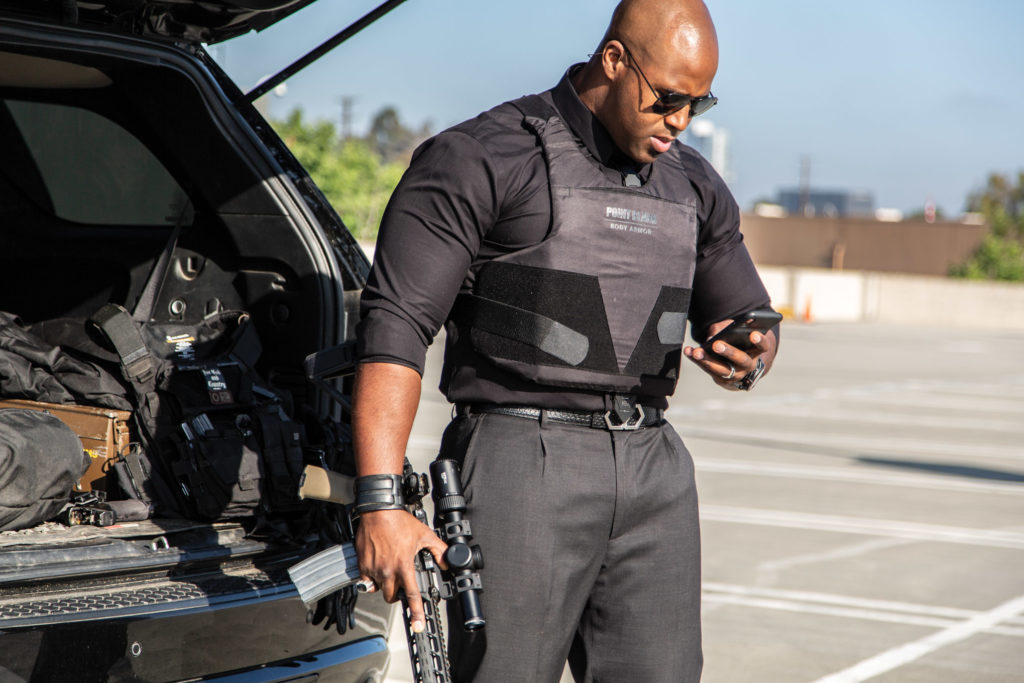
In this game you’ve always got to be ready, so Byron keeps all of his gear in the vehicle just in case he gets called…
When did you start your own company?
Byron Rodgers: During my first year, I was on the road a whole bunch. We were gone two to three weeks a month, and I needed a normal life. So, after doing that for seven years, living on private jets and stuff, I grounded myself with that client to only work for them when they were in California. I began working for about five local California companies. We call that “chasing the pager.” I was doing domestic security contracting where job offers would come and I’d sign myself up for the ones I liked. After doing that long enough to realize that I didn’t want to work for someone for the rest of my life and until I had enough of the right types of relationships and thoroughly understood the industry, I launched my company in 2017. Some professionals try to jump too quickly into having their own company, but personally it took me about nine years in order to do it effectively. Admittedly it was my second attempt, so I understand where they’re coming from.
What services do you and your company provide?
Byron Rodgers: We provide manpower and armed guard services for anything from various facilities all the way up to executive protection operations. We also do things such as penetration testing and have a pretty strong ability to get things done as far as cyber security and things on the tech side of the fence as well.
Do you work primarily with businesses, individuals, or both?
Byron Rodgers: Individuals, high-net-worth families, and churches/faith-based organizations for the most part, but it’s a mixture as well. We also have some businesses that hire us for guard services, which are more corporate. It’d be against the industry standard to name the names of my clients, but I can say I’ve worked the 2016 Presidential Inauguration, been in over 60 countries, and worked with every demographic that the industry has to offer. Everything from celebrities, politicians, royal families, A-list actors and singers, professional athletes, and even the transportation of valuable cargo all over the U.S. and internationally. I continued doing this for seven years straight, but now I still travel but I have more control over it.
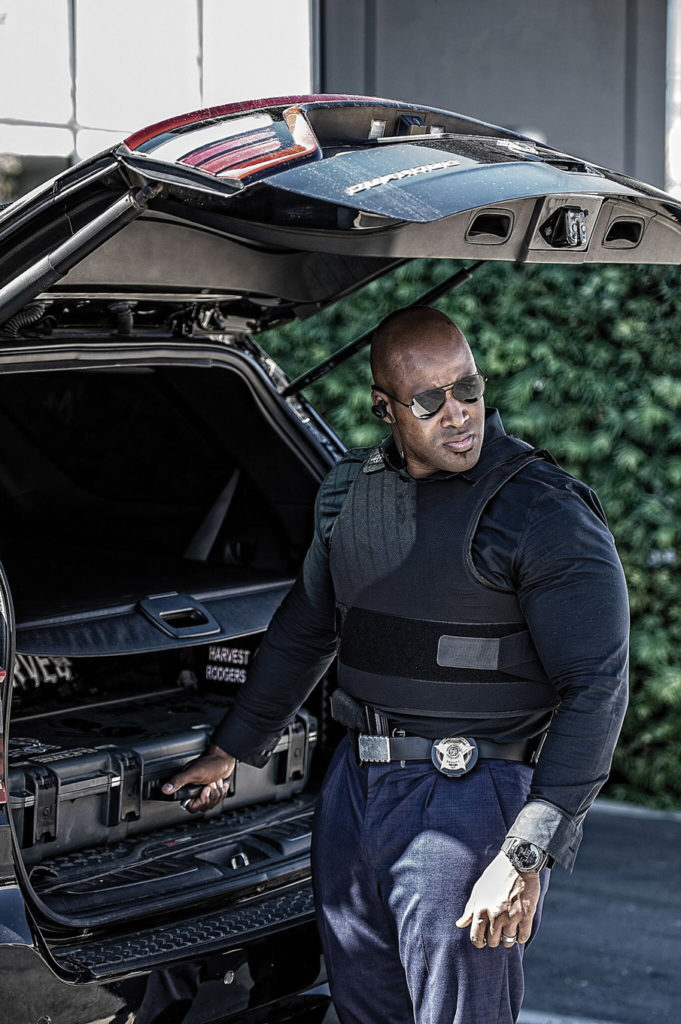
It’s important to make sure your skills and your gear are ready to work the full spectrum of the private security…
What are the main things your clients look for?
Byron Rodgers: It may sound a little counterintuitive, but professionalism and brand equity. For example, does the security product that we’re rendering add to their brand equity or subtract from it? Externally, as people are on the outside looking in, I notice the clients are very concerned with the look and feel, and the way they want to relate to the world. I find that to be one of the most anchoring principles when it comes to staying in a relationship with clients. The other thing is that I’m very relationship-centric. I’m focused on creating a long-term relationship with the client. As they change, I can change. Those things have really paid off.
Can you tell us about any close calls you’ve had?
Byron Rodgers: In the Dominican Republic, we had an issue where fake police were trying to pull us over. Fortunately, my local guys recognized it and stopped it from happening. They rammed the cop cars and pushed us around the barricade that they had set up for us. In that country, kidnapping is very common. Families even have kidnapping funds set aside.
Another time, we had a situation in the Congo where I found myself in a room full of local money. Piles of money, all over the floor, there were black bags full of it we were dealing with. We were trying to organize my client’s move and that cash. He was in another room. Our police escort was supposed to be guarding this place for us. There were no blinds on the windows, just these torn curtains. Our escort was looking at us in this room counting the money, and I was thinking, this is not good. The cops were staring at us, and people started gathering around the room.
We evacuated the client, but ended up leaving most of the money there. We had to do what we call “manning the rails,” fight everyone off the car, and get to the airport where the security was basically 14-year-olds with AK-47s. We rolled up to the FBO (flight base operations) and about every 30 minutes the FBO was coming up with new charges. Like, “Hey, you need to pay us the $250 airport tax.” And then 20 to 30 minutes later, there’d be another, like we needed to pay $250 for some other BS they’d make up. The pilot told them we weren’t paying any more money, they told us we couldn’t take off, and we were getting the flight handler on the phone.
This went back and forth for a while, and the pilot just said to buckle up because we were taking off. We just left, and they were on the radio yelling at the pilot and threatening to shoot him down and then he yelled back at them that they didn’t have an air force [laughs]. Boom, we were gone. That was definitely a situation where I was wondering what was going to happen. From the moment we realized there was trouble starting, getting to the car, fighting through the crowd, navigating to the airport, dealing with the airport, it was a wild ride for sure.
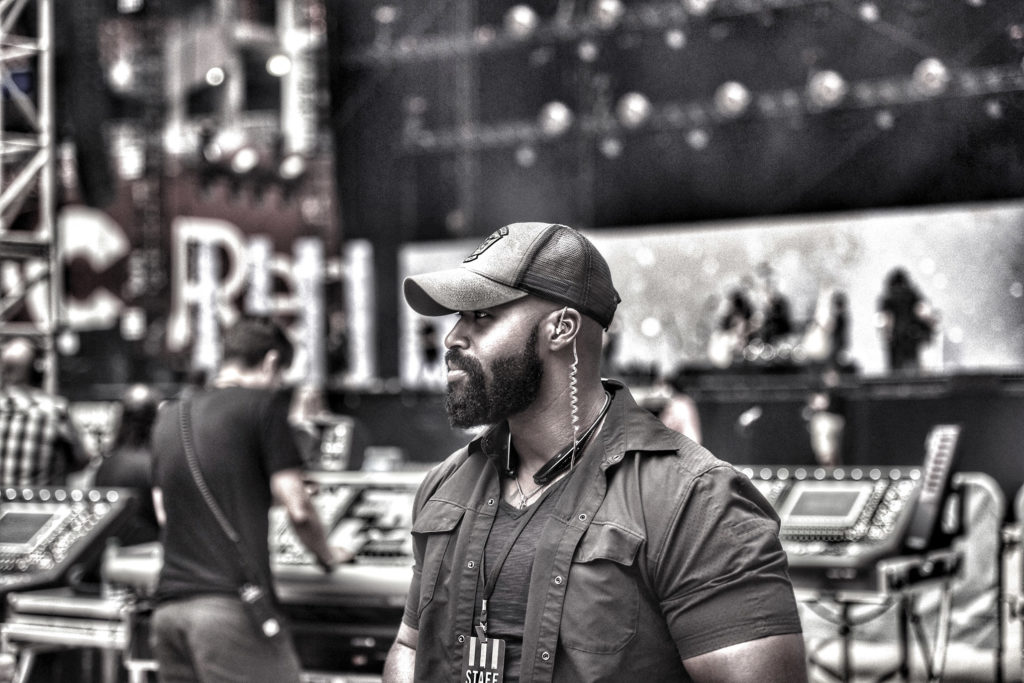
Understanding the micro and macro components of running venue security is foundational, but make no mistake, you’ll…
Has the executive protection landscape changed much from when you first started?
Byron Rodgers: Quite a bit actually. When I first got started, it was like you don’t get in unless you know someone. It was ultra-secretive and very tight-lipped. Things have changed exponentially because there’s been a ridiculous amount of growth because of things taking place in American culture. There’s more danger, there’s riots, human-threat scenarios with active shooters, so America is seeing more of a need for higher levels of security. Simultaneously there’s a war that’s been launched on law enforcement. With corporate America, you’re seeing a lot more companies bring a security element or department in-house. So, there are a lot more job opportunities where you can get full packages with stock options and make six figures. It’s a legit career field.
When I got in it you just happened to be that 1 percent like the Special Forces, NFL, or major leagues. There was no healthcare, no nothing. You did the job, got paid, that was it. You were an employee with a weird classification. Now, it’s so much more robust. There are huge companies that’ll hire you that do just executive protection and will find you work. When I started, you had to find your own clients. Networking can be done digitally as well now, and it’s a huge force multiplier for finding opportunities and getting inbound.
What do you think the keys to being successful in this industry are?
Byron Rodgers: Social dynamics, emotional intelligence, and the ability to plan/logistical intelligence. You need the social intelligence in order to navigate the environment you’re in, such as the client’s world. You have to navigate the “royal court,” which are the relationships around the client. You also have to navigate team life, the house staff, and the business owner or person who hired you. Handling any of those relationships incorrectly can be devastating — this is one of my favorite subjects to teach and one of the primary reasons I believe I’ve been successful. I’ve never been the biggest, baddest, or the best, but I’ve always been relationship-centric and have gone through pains to rigorously maintain humility to the best of my ability.
As far as growing your brand and achieving career success, managing relationships with other professionals is your number-one tool for attracting opportunity. Hard skills may save lives, but soft skills will keep you in the game. Understand the power of cooperation — it’s the key to unlocking a powerful team, not only in this game, but in life I believe. Every member must come from a place of selflessness putting the team over one individual because it makes all of you stronger. One really good guy by himself is actually a very weak target. We see this in nature — it’s the survival of the pack that’s actually the strongest and not necessarily survival of the fittest. Competence, trust, selflessness, and initiative are values that I believe make an amazing team, but like many things in life, these steps are simple to understand, but difficult to implement among multiple personalities.
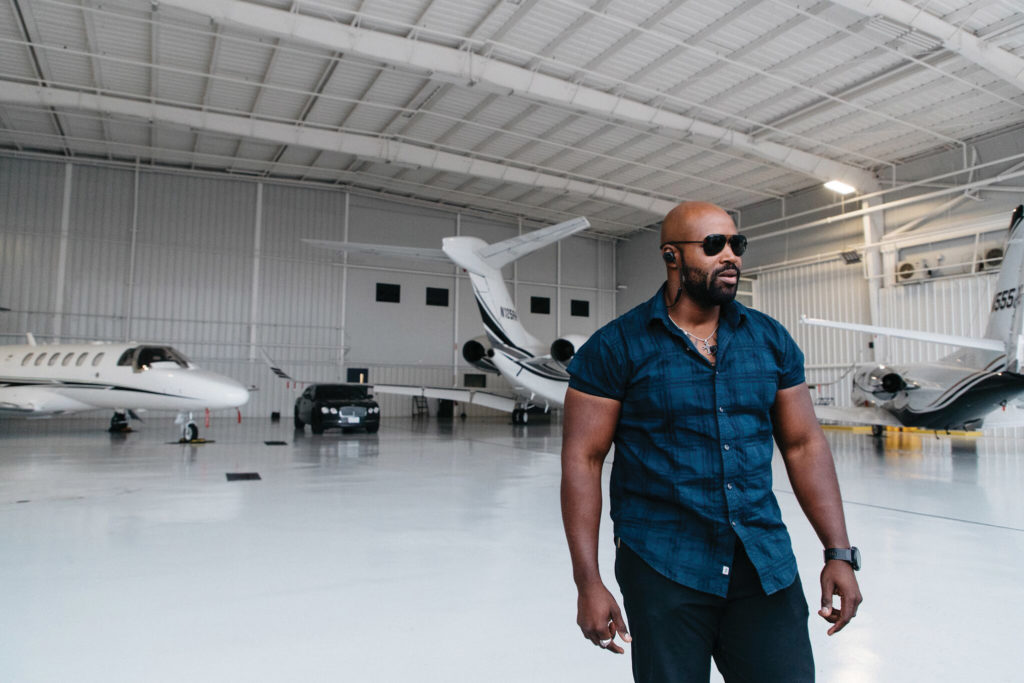
Flying in private jets and staying at seven-diamond hotels is part of the job test, but so is managing your ego. A good…
What do you think the most misunderstood parts of this profession are?
Byron Rodgers: We get a lot of really high-power dudes in this industry who think it’s going to be about combatives and tough-guy stuff. It’s really about social dynamics, customer service, and facilitating trips and movements in the safest manner possible. It’s extremely preventative. A lot of guys find it boring or insulting, like, “Hey, I’m not your coffee getter. Or, “I don’t carry bags.” Maybe in the State Department that works, but in the private sector you’ll just get fired, and they’ll find a guy who can carry bags and protect them.
If you’re with a high-power client with a lot of weight to throw around who has their own private jets, you might start to think you’re the man, but it’s not really any running and gunning. There are always the flavor-of-the-month guys who think they’re the most gangster EP agents ever and gonna change the world, but then they run out there and fall on their sword very quickly.
Do clients often have expectations of you that don’t align with what you need to do to protect them?
Byron Rodgers: Clients frequently hinge in the realm of ridiculous and unrealistic, but possible for a billionaire. That’s another thing that causes a lot of stress and cognitive dissonance — some guys are like, “Who do these people think they are? Do they think I just have this in my back pocket? Like we can just make this happen; they can just change their minds, and we can just ruin all of our planning?” They get wrapped around the axle and lose perspective.
You’ve got to remember, we’re dealing with billionaires who can have almost anything they want, whenever they want. If you can’t deliver, even though they change their mind at the last minute, in their world there’s something wrong with you and they can replace you by tomorrow. So, you get inoculated when you’ve been in this game for a while to dealing with the whims of turning water into wine, spinning straw into gold, and doing a number of things that are not executive protection-centric. It’s stuff like walking the dog, putting the car seats in the car, or looking for certain types of foods at 1:30 a.m. To the client, when they want something, they might think that you’re there for that and they just tell you to go do it. If you’re there in a secure position, or you’re the only one, you find yourself having to make certain choices, moves, and plays sometimes.
You might be in a jet where the client is like, “Hey, let’s go to the Canary Islands real quick!” They’re excited. Well, you’ve got to be excited too even though you didn’t do any planning. You know that if there’s no place to stay, or the travel department can’t get this thing linked up quickly enough because you guys are landing in an hour, it’s going to be your fault by the time you hit the ground if this stuff isn’t done and the client can’t show up to a nice rental car and ride off to the hotel on par with their standards. You’re dealing with a fast-paced game, and you really separate the plan makers from everyone else. Those people who know how to flow with the client, not be stressed out, and field all these requests are the ones who succeed. We call it The Truman Show sometimes [laughs].
Where can people get formal training and education if they want to work in executive protection?
Byron Rodgers: There are many schools out there, but I believe my course is the most effective tool to educate and get someone into the field of executive protection right now that I know of. You can learn from the comfort of your own home; you don’t have to stop working. I’ll teach you executive protection, but also branding, marketing, how to do your résumé, etiquette, social dynamics, and professionalism relative to the industry. And then I teach skills like how to do walking formation, vehicle-mounted operations, how to work in venues, hotels, site-based operations, how to work on private jets, etc.
I take students through the executive protection curriculum after all the things I didn’t see at most other schools. Beyond that, they become part of the League of Executive Protection Specialists, which is my group of graduates who I do weekly Zoom meetings with that I coach, so you basically have an executive protection consultant for the rest of your career. We have a group who shares opportunities and are hiring each other, so it’s a very positive place that’s helped a lot of people.
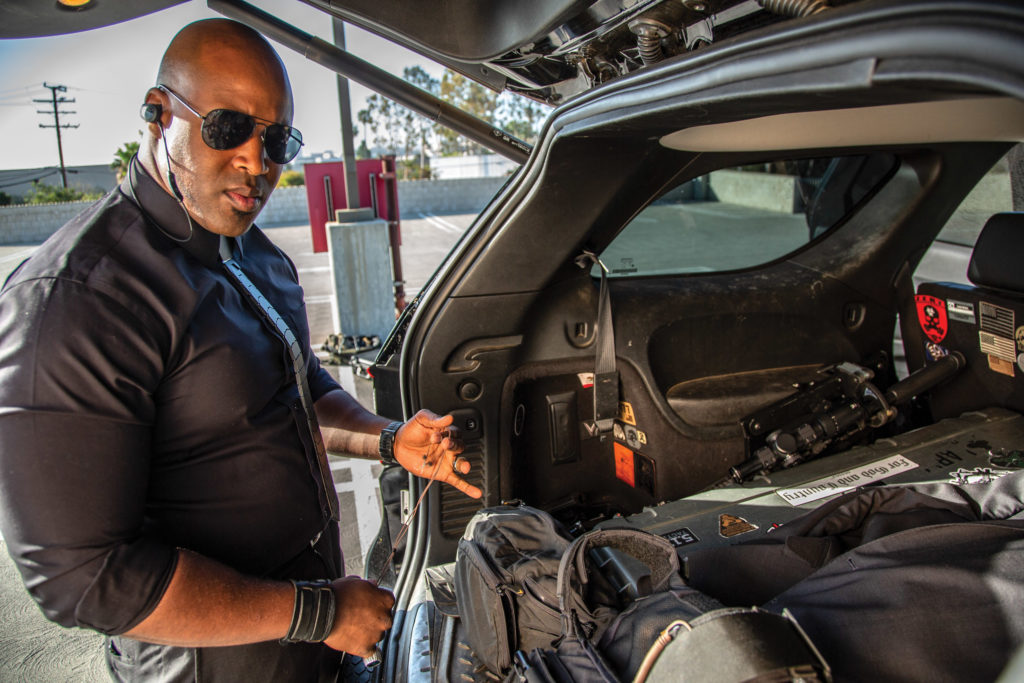
“I’m not the biggest, baddest, or the best … I’m just a man willing to fail in front of you while trying to…
If people are looking to hire someone for executive protection, how would you recommend they vet those individuals to make sure they’re legit?
BR: That’s very difficult because you might not know what to look for. If you don’t have the eye to recognize those types, it’s tough. I’ve run across so many clients that are relieved to have a competent team of professionals with them because they’ve had so many unprofessional people work with them in the past. When it comes to vetting people, there are a lot of imposters out there with a good song and dance who can make things look really pretty. I’d say talk to previous clients or employees — that’d be a good way to find out what they’re really all about.
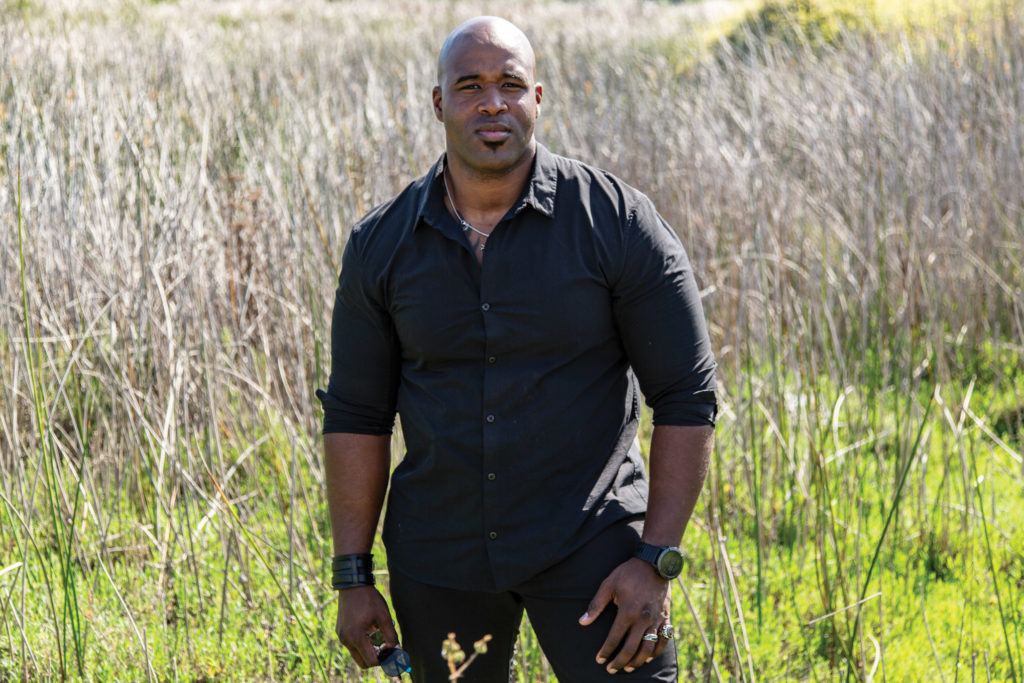
To those at the top of the game, the art of protection is more than just a job, it requires a lifestyle. How else will…
Tell us a bit about Protector Nation and Protector Symposium.
Byron Rodgers: The Protector Symposium series is giving birth to the Protector Nation. I see all the changes taking place in American culture and how you can get stuck in the middle of a riot, pulled out of your car, and beat to death. There could be an active shooter scenario in your corporate building or church this month. I see these incidents and tectonic plates in American culture changing. The goal with both of those brands is to help good people, regardless of occupation, to become more willing, capable, and prepared to deal with evil. It’s also about helping good people become more dangerous. I’m with Jordan Peterson’s school of thought insofar that a good man isn’t just a nice, sweet man. A good man is a very dangerous man who has it under control, has great discretion, and can be the backbone of a nation, his society, and family because he’s strong — that’s what I want to foster in the world. I want good people to be able to defend themselves. I want bad guys to think twice and be afraid of good people.
Protector Symposium events are going to take place throughout the year where we bring in trainers you can learn from. We have them speak on their techniques, but we’re also going to get into actual hand-to-hand, on-ground training that’ll increase your protection IQ in one event. That’s what the Protector Symposium is all about. The Protector Nation is the nation of people in the world who are naturally protectors. They are here to maintain order on our planet and bring on-scene accountability.
It’s not for tire kickers who just want to have fun. It’s for serious adults who want to learn skills as long-form education. It’ll almost be like an online university for protectors — you can get a Level 1 certification for completing stuff online, Level 2 for going to training with certain instructors, and every month there’ll be an information drop from a specific subject-matter expert on a protection skill that we think will make you more willing, capable, and prepared to bring on-scene accountability in your environment. I look forward to rolling this thing out and having various chapters and organizing it into a body of people who can serve the community as needed in the future.
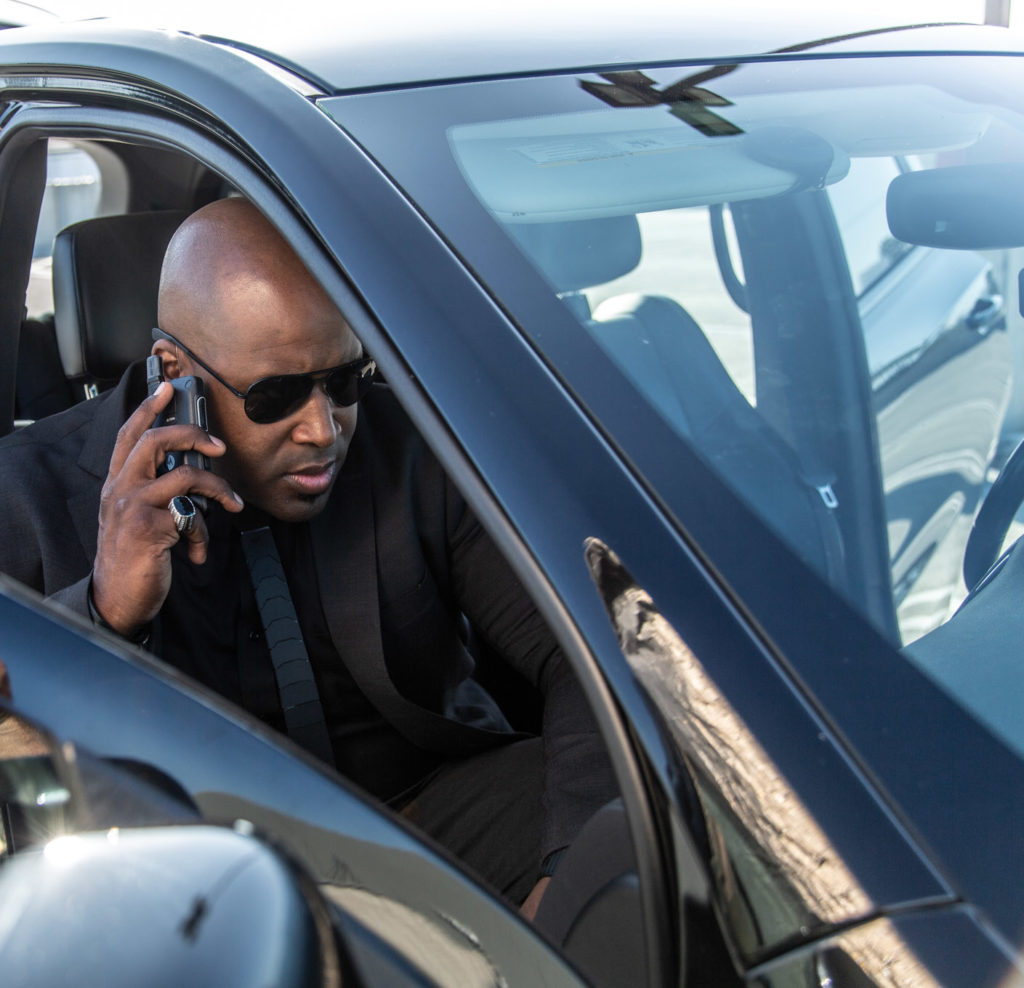
You must be able to flow with your team and client while keeping the stress low and making it look like you planned for…
Do you feel self-defense is stigmatized in the United States?
Byron Rodgers: It does bring a little bit of a stigma. I’m not sure this is accurate in terms of what other people have experienced, but when someone says “self-defense” I’m picturing like a mom in her workout class with some sweats and a rape whistle and there’s an instructor who’s like, we’re gonna learn self-defense today blowing the whistle and doing some kicks. I think true self-defense is so terribly important. I commend those who go out and study it, but am really scared for them being able to find good information and good trainers with things that’ll help them in real life. Protector Symposium and Protector Nation use trainers that’ve been there, done that, and have credentials with real-world experience to back it up.
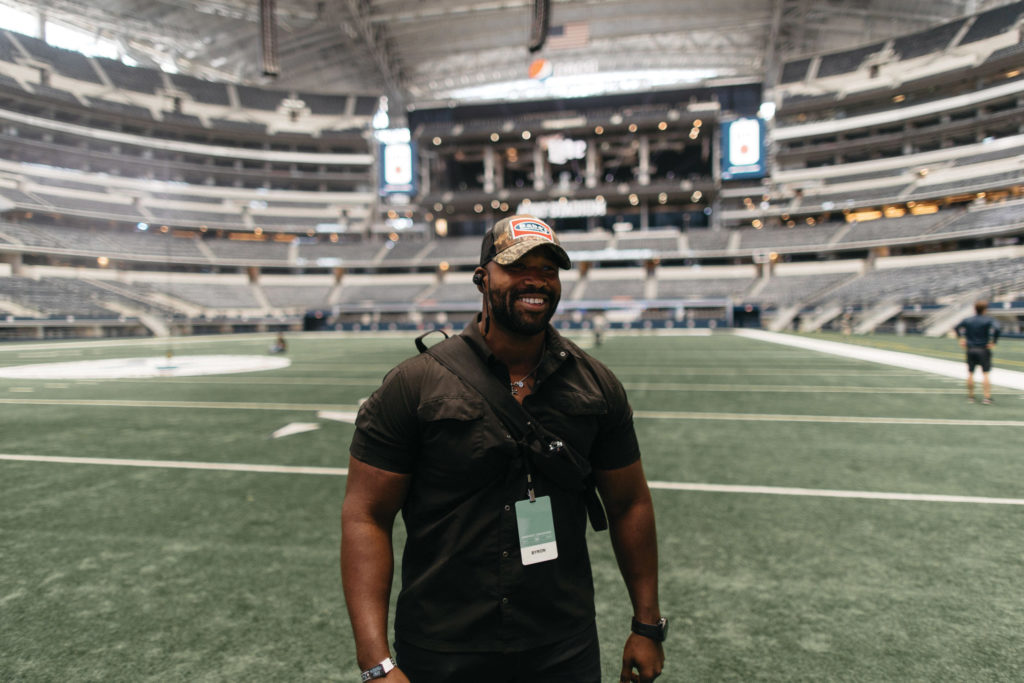
“I’ve lost more friends to suicide since we’ve been out of the Marine Corps then we lost in combat because…
Given what’s happened in 2020, what security threats do you expect to increase that the average citizen should learn to protect themselves against?
Byron Rodgers: I think we’ll see more civil unrest just because it was dealt with so passively, and was even subversively validated in my opinion. I think we’ll see more looting and behavior like this. That’s something everyone should be prepared to deal with. If you’re in your car driving somewhere, you come upon people blocking the road, you’re boxed in, they might say they stand for equality, but are about to jump you because you’re the wrong color or have the wrong bumper sticker on your car. You could find yourself in an ambush situation very quickly with a high degree of danger because we all know groupthink is an issue.
The other thing I’d really warn people about is social media and the way that predators in regard to human trafficking and kidnapping are using social media. A lot of civilians are oblivious on how to behave and how not to make themselves an attractive target on social media. It’s like a candy shop. With my podcast, every single one of the people I interview who have anything to do with kidnapping or human trafficking will tell you that your biggest vulnerability is your social media, even if you think you’re a ghost and the most off-grid social media guy out there, well guess what? Someone came over for a barbecue and they’re posting pictures of your house, you, your kids, and inadvertently geo-tagging it. Now anyone who wants to find you and yours, or wants to steal your gun while you’re at work that may have been posted, can get up in your business.
Hometown: Orange, CA
Family status: Married
Childhood idol: Julius Caesar
Recommended reading list:
Favorite movie: Inception
Beer or wine? Vodka, but if I had to choose, wine.
Boxing or MMA? MMA
Favorite quote: “In the end, all that matters is what you can achieve.”
Military experience: Just a grunt turned private security professional.
Describe yourself in three words: Perspective, Driven, Fluid
URL: www.byronrodgers.com

Byron Rodger’s book is available HERE on Amazon for $19.99. Your purchase helps OFFGRID.
The post Byron Rodgers: Experience is the Teacher of All Things appeared first on RECOIL OFFGRID.
This article was originally published by Michael Snyder at The Economic Collapse Blog.
The economic downturn that we are currently experiencing is making the last recession look like a Sunday picnic. Yes, 2008 and 2009 were bad, but they weren’t anything like this.
Unprecedented intervention by the Federal Reserve has allowed the rich to get even richer during this crisis, but meanwhile millions upon millions of ordinary Americans are deeply suffering. Unfortunately, what we have gone through so far is just the beginning.
As a child, I was a big fan of Sesame Street, and one of the characters that really stood out to me was Count von Count. I loved the fact that he was always counting things, and that is what I am going to do in this article in order to illustrate how bad economic conditions have now become.
Let’s start with the number 7. According to the Congressional Budget Office, approximately 7 million more Americans would have jobs right now if the COVID pandemic had never happened…
But in fact, what the CBO is projecting is dire: around 7 million people out of work in 2021 whom CBO thought before the pandemic would be working. That’s dire – and a call to immediate action, not calm, not wait-and-see.
Personally, I think that estimate is way too low.
In fact, the Federal Reserve says that 152 million Americans were working before the pandemic started, and only 142 million Americans are working now.
So the CBO estimate appears to be off by about 3 million.
Count von Count would not be happy.
Let’s try another number. According to Bloomberg, the number of Americans living in poverty has risen by 8 million during this crisis…
Support is rising among policy makers to address America’s child-poverty crisis, which is getting worse as the pandemic drags on.
More than 8 million Americans — including many children — fell into poverty during the second half of last year, exacerbating the racial and income inequalities that are holding back the U.S. economy.
In this case, I think that this is a reasonable estimate, but that number will inevitably keep growing in the months ahead.
One of the big reasons why it will continue to rise is because hordes of small businesses will be collapsing, and that brings us to our next number.
According to a study that was recently released by the Fed, 9 million small businesses in the U.S. say that they “won’t survive” in 2021 without more government assistance…
Three in ten small businesses — or 9 million out of the estimated 30 million in the United States — fear they won’t survive in the coming year without additional government assistance, according to a survey recently published by the Federal Reserve.
The Small Business Credit Survey, which was conducted last September and October and released last week, showcased the incredible burden the coronavirus pandemic has placed on America’s small businesses, as 88% of the businesses surveyed reported that sales had not yet returned to pre-pandemic levels.
Can you imagine what our country would look like if almost a third of all small businesses permanently disappeared?
If you watched the Super Bowl, you were bombarded with messaging about the plight of our small businesses. We have never seen anything like this before, and that is because our small businesses have never had to face a crisis of this magnitude.
With each passing day, more small businesses are folding, and nothing that the federal government is going to do will completely stop this trend.
Our next number is 10. According to the U.S. Census Bureau, 10 million renters were behind on their rent payments in January, and many more people anticipated not paying rent in February…
An estimated 10 million renters were behind on their rent and at risk of eviction in the middle of January, according to a Census Bureau survey. And an estimated 16 million renters had little to no confidence they could pay rent in February.
Overall, U.S. renters now owe at least 30 billion dollars in back rent.
This has created extreme financial pain for America’s landlords, and when the rent moratoriums are finally lifted we are going to see the largest tsunami of evictions in all of U.S. history by a very wide margin.
Before I wrap up this article, let me leave you with just one more number. So far in 2021, the number of passengers at U.S. airports is down by more than 60 percent compared to 2019…
Over the past seven days, not quite 707,000 passengers per day on average passed TSA checkpoints at US airports, a measure of how many passengers in the US are flying somewhere. This was down by 61.6% from the same period in 2019, the last full year of the Good Times. At the end of January, the drop from 2019 was over 65%.
I honestly do not know how the airline industry is going to survive this without government help.
Speaking of not surviving, Democrats have introduced a bill in Congress that would essentially deal a death blow to the gig economy…
The legislation at the core of their agenda is the PRO Act, which Democrats just re-introduced with sponsors including Speaker of the House Nancy Pelosi and Senate Majority leader Chuck Schumer. Among many other things, the bill would severely restrict the legal definition of independent contractors in a way that would largely end the gig economy as we know it.
The legislators’ stated intention is to protect workers and bolster their rights under law. Through the reclassification of independent contractors, Democrats hope to force gig economy companies to hire workers as full employees and thus provide them the accompanying salaries and benefits.
If this bill passes, it would absolutely devastate Uber, Lyft, and countless other companies that rely on gig workers.
Basically, millions of jobs would go “poof” with one stroke of Joe Biden’s pen.
According to the Bureau of Labor Statistics, more than 50 million Americans are currently employed by the gig economy. It is great to want those workers to have higher pay and more benefits, but if those companies go out of existence there won’t be any jobs at all.
These are very dark times for the U.S. economy, and the outlook for the future is exceedingly bleak.
However, in the short-term economic conditions should stabilize somewhat thanks to the huge stimulus payments that the government will be sending out.
But that bubble of hope will be very brief, and everyone should be able to see that much more pain is on the horizon.
***Michael’s new book entitled “Lost Prophecies Of The Future Of America” is now available in paperback and for the Kindle on Amazon.***
About the Author: My name is Michael Snyder and my brand new book entitled “Lost Prophecies Of The Future Of America” is now available on Amazon.com. In addition to my new book, I have written four others that are available on Amazon.com including The Beginning Of The End, Get Prepared Now, and Living A Life That Really Matters. (#CommissionsEarned) By purchasing the books you help to support the work that my wife and I are doing, and by giving it to others you help to multiply the impact that we are having on people all over the globe. I have published thousands of articles on The Economic Collapse Blog, End Of The American Dream, and The Most Important News, and the articles that I publish on those sites are republished on dozens of other prominent websites all over the globe. I always freely and happily allow others to republish my articles on their own websites, but I also ask that they include this “About the Author” section with each article. The material contained in this article is for general information purposes only, and readers should consult licensed professionals before making any legal, business, financial, or health decisions. I encourage you to follow me on social media on Facebook, Twitter, and Parler, and anyway that you can share these articles with others is a great help. During these very challenging times, people will need hope more than ever before, and it is our goal to share the gospel of Jesus Christ with as many people as we possibly can.
The post 8 Million More Living In Poverty, 9 Million Small Businesses In Danger Of Closing, 10 Million Behind On Rent… first appeared on SHTF Plan – When It Hits The Fan, Don’t Say We Didn’t Warn You.This news could give you a reason to stay up at night. Joe Biden’s administration is getting more aggressive against China. Biden has unveiled a Pentagon “China task force” to deal with the “challenges” China poses.
As the Asian nation has over one billion in population, a war with the CCP would end badly for the United States. Anyone with two brain cells to rub together knows that a war with China is already all but lost. Maybe everyone except Joe Biden. Because he’s flexing muscle he doesn’t have toward the Chinese. Biden has launched a military task force to assess US policy toward Beijing, vowing to confront the “China challenge” as he continues his predecessor’s naval deployments in the country’s backyard, according to numerous reports.
In a move that amounts to ramping up military aggression dramatically, Biden announced the new task force during a Pentagon visit on Wednesday, his first to the department, declaring that his administration would “meet the growing challenges posed by China to keep peace and defend our interests.” This decision has nothing to do with “peace.”
With @POTUS‘ remarks today, DOD announces a new China Task Force to review all U.S. policy toward China and how “we will meet the China challenge” and “win the competition in the future.”
Will be led by longtime Biden staffer and @CNASdc exec @elyratner.
Details here: pic.twitter.com/CybMjeXpDd
— Paul D. Shinkman (@PDShinkman) February 10, 2021
Anytime the government talks about peace, you’d be wise to prepare for war.
Led by Eli Ratner, who serves as special assistant on China to Defense Secretary Lloyd Austin, the task force will be composed of 15 civilian and uniformed defense officials and will deliver its findings to Austin within four months, according to a Pentagon fact sheet, which dubbed the project a “sprint effort.” The panel is not expected to produce a publicly available report, however -RT
Biden also said he would not “hesitate to use force,” against China.
Biden’s first major foreign policy address took a combative stance toward Beijing, which he dubbed America’s “most serious competitor” while echoing rhetoric reminiscent of Trump’s on China’s alleged “economic abuses” and “attack” on intellectual property. In announcing the China task force on Wednesday, the president went even further in his vows to confront Beijing, warning that he would “never hesitate to use force,” though nonetheless said military action should be a “last resort.” -RT
If this escalates, this will be the final nail in the coffin of this country. Wake up. These people (all ruling classes ad elitists) want war. But they won’t be fighting it. They want money, but they won’t be earning it. They want power, and they will be taking it from us by force.
Remain vigilant. Things seem to be coalescing behind the scenes. Put two and two together and use your discernment to come up with the answers, because we know we won’t get them anywhere else.
The post Biden’s Push To “Challenge China” first appeared on SHTF Plan – When It Hits The Fan, Don’t Say We Didn’t Warn You.A new poll has found that the vaccine propaganda is failing. Even with all of the censorship and propaganda designed to brainwash the public into getting this vaccine, about one-third of Americans remain skeptical.
The poll from the Associated Press–NORC Center for Public Affairs Research found that while 67% of Americans plan to get vaccinated or have already done so, 15% are certain they won’t and 17% say probably not. Many expressed doubts about the vaccine’s safety and effectiveness.
But we have nothing to fear, right? The mainstream media and the ruling class say this vaccine is our ticket to return to normalcy. Or is it?
WHO Chief Scientist: There Is NO EVIDENCE That The Vaccine Will Prevent Infection
Even if you get the vaccine, the ruling class demands that you don the ritualistic shame muzzle to show your compliance to the New World Order. No wonder people are losing trust in rulers.
Dr. Anthony Fauci, the government’s leading infectious-disease scientist, has repeatedly admitted to lying and moving the goalposts in order to push the vaccine agenda.
After Telling The Public to Wear 2 Face Masks, Fauci Says There’s No Evidence That Helps
Fauci Admits To Lying About Herd Immunity To Convince People To Get The COVID Vaccine
He has consistently lied to the American public about herd immunity and has admitted such. Media outlets claim that somewhere between 70% and 85% of the U.S. population needs to get inoculated to “stop the scourge” that has killed close to 470,000 Americans.
More recently, he said the spread of more contagious variants of the virus increases the need for more people to get their shots — and quickly, whether those shots will work or not. What’s important here, is the fear and belief in centralized commands and authority. Once the slaves start to see what’s really going on, Fauci will be one of the first they demonize.
Nearly 33 million Americans, or about 10% of the population, have received at least one dose of the mRNA COVID-19 vaccine, and 9.8 million have been fully vaccinated, according to the Centers for Disease Control and Prevention.
Honestly, I gave Americans too much credit. Those numbers are much higher than I assumed they would ever be. It is stunning how many slaves will simply line up and do what they are told.
Medical Journal: Get The COVID-19 Vaccine, Or Be Punished HARSHLY
The post At Least One Third Of U.S. Adults Are Skeptical About The COVID-19 Vaccine first appeared on SHTF Plan – When It Hits The Fan, Don’t Say We Didn’t Warn You.Robert F. Kennedy Jr. has been banned and removed from Facebook’s Instagram platform over “debunked vaccine claims.” RFK Jr. has been an outspoken critic of vaccines, and one thing the New World Order needs a fully vaccinated public incapable of thinking for themselves.
Facebook has taken down the Instagram page of former president John F. Kennedy’s nephew – a prominent vaccine critic with 800,000 subscribers. The tech giant has recently stepped up its offensive on what it deems Covid-19 disinformation, according to a report by RT.
Robert F. Kennedy Jr. had his #Instagram account taken down. Instagram’s official statement: “We removed this account for repeatedly sharing debunked claims about the #coronavirus or #vaccines.” @RobertKennedyJr pic.twitter.com/hXMkTSspTM
— Geopolitics & Empire (@Geopolitics_Emp) February 11, 2021
Facebook has confirmed they censored RFK Jr. for disagreeing with them and the ruling class. “We removed this account for repeatedly sharing debunked claims about the coronavirus or vaccines,” Facebook said, confirming the deletion of his hugely popular page. Hopefully, people will begin to wake up in mass numbers and much more quickly than they have been to what’s really going on.
Kennedy Jr. has drawn stark criticism for his anti-vaccine stance from the mainstream media, with CNN’s Jake Tapper labeling him a “menace” for calling Dr. Anthony Fauci a “very sinister guy who has turned” America over to “Big Pharma.”
Kennedy has been a long-time outspoken vaccine critic. But more than ever, the ruling class and elitists are desperate to silence dissent in any and all forms and keep information from the public that could help advance a free society.
If people do not share in the elitists’ visions for the totalitarian enslavement of humanity, they will be silenced.
As Brian from High Impact Flix, a YouTube creator says “those who burn books today will be burning bodies tomorrow.” Wake up. Stand with morality, no party.
The major problem here is one we should all be able to see. One of their own (a member of the establishment ruling class), Dr. Anthony Fauci has admitted to flat out lying about herd immunity and delivering misinformation to the public to push the vaccine agenda. So, as long as the misinformation is helping the slave state to advance, it’s fine.
Fauci Admits To Lying About Herd Immunity To Convince People To Get The COVID Vaccine
The removal of Kennedy’s account comes as Facebook has taken its clampdown on coronavirus-related claims that do not align with the World Health Organization (WHO) and other health authorities’ recommendations up several notches.
The post BLATANT CENSORSHIP: RFK Jr. Get BANNED From Instagram first appeared on SHTF Plan – When It Hits The Fan, Don’t Say We Didn’t Warn You.This article was originally published by Kevin Duffy at The Mises Institute.
“Threats to freedom of speech, writing, and action, though often trivial in isolation, are cumulative in their effect and, unless checked, lead to a general disrespect for the rights of the citizen.”
~ George Orwell
In early December I asked Jim Grant how to reconcile exuberant financial markets with the economic reality that reads like dystopian fiction. He responded,
I’m not sure there’s much distinction. To me, the current form of dystopia is the bubble form. So I think this is the year of the dystopian bubble.
The opening pages of the new decade feel like we’re living through a combination of George Orwell’s 1984 and Charles Mackay’s Extraordinary Popular Delusions and the Madness of Crowds. On the day the 2020 election results were to be certified in the Senate, a mob from the losing side surrounded and actually breached the Capitol. The outgoing president was accused of inciting a riot, threatened with impeachment, and banned for life on Twitter. Despite the chaos, stocks shrugged it all off and rallied to new highs.
The following weekend cover of Barron’s, “The Case for Optimism,” captured the manic side of the dystopian bubble perfectly. Its editorial staff sees a silver lining in practically every cloud:
[T]his is a market determined to march higher, and it’s not about to be derailed—even by historic mayhem in the nation’s capital. Stocks are rallying on the trillions of dollars in stimulus that may only be accelerated under the new administration. A chaotic political season is winding down, while the economy is gearing up for a postpandemic reopening.
Investors need to keep their eyes forward and look ahead to a Joe Biden presidency: to more-predictable domestic policies, smoother trade relations, and additional efforts to revive the economy. Now might not be a good time to own anything defensive.
Still, Barron’s acknowledges a new set of political risks:
That’s not to say that a Washington controlled by the Democrats…will be entirely friendly to investors. The Democratic agenda includes corporate and individual tax increases, heightened regulatory oversight, and such ambitious social and economic policies as a Green New Deal, health-care reform, and student-loan forgiveness.
With bigger government on the way, what could possibly go wrong?
During the first presidential debate in September 2016, citizen Donald Trump trashed the 7.5-year Obama-Bernanke-Yellen bull market, calling it “a big, fat, ugly bubble.” The Fed’s balance sheet has since expanded 63 percent, the national debt has grown 41 percent (tacking on $8 trillion), and the budget deficit multiplied 5.5 times. Meanwhile, US stocks, as measured by the S&P 500, have percolated another 80 percent.
Former President Trump may or may not suffer from a narcissistic personality disorder, but he clearly doesn’t lack confidence. One of the symptoms of NPD is grandiosity; “Make America Great Again” was always a delusion.
While the incoming administration promises to “build back better,” a betting man should expect more of the same; in fact, much more of the same.
American politics has been a quasi-one-party system at least since the days of Camelot (1960 election of JFK), with Democrats pushing the envelope toward big government and Republicans offering little principled resistance while providing the illusion of healthy debate, acclimating themselves to the political swamp in the process. The two-party system officially died in 1964 when Barry Goldwater was defeated in a landslide by Lyndon Baines Johnson. Goldwater was the last of a dying breed cast in the mold of the Old Right: an anti–New Dealer with a Cold Warrior streak, a classical liberal who called himself a conservative.
Richard Nixon was the first in a long line of establishment Republicans. While ending the Vietnam War, his administration consolidated the gains of LBJ’s Great Society programs, created the EPA (Environmental Protection Agency), OSHA (Occupational Safety and Health Administration), and ERISA (Employee Retirement Income Security Act), declared wars on cancer, drugs, and inflation, and on August 15, 1971, severed the last ties of gold to the US dollar. The Watergate scandal ended Nixon’s political career, but it was Goldwater’s threat to back the impeachment process that sealed his fate.
The upward march of statism has continued unabated with some brief pauses to catch our breath: Ronald Reagan was a throwback to Goldwater and Trump perhaps a less couth version of Reagan, each a watered-down version of his predecessor. Neither was willing or able to stem the tide of debt, deficits, and money printing.
Say what you will about Trump, as Lew Rockwell remarked after his improbable 2016 election victory, his most endearing quality is that “all the right people hate him.” The political left and establishment right are giddy over his defeat and both want to drive a stake through his heart and the populist movement he represents.
The 2020 election formalizes the transition to one-party rule in the United States.
“A society becomes totalitarian when its structure becomes flagrantly artificial: that is, when its ruling class has lost its function but succeeds in clinging to power by force or fraud.”
~ George Orwell
All (or nearly all) politicians lie, but those on the left take the art form to a new level. To understand why requires examining the mind of the progressive.
After the Capitol breach on January 6, a progressive on Facebook said of conservatives, “We’re going to drag them into the 21st-century kicking and screaming if we have to.” The Left envisions a socialist utopia, the inevitable slope of human progress. Their role is to bring this about by any means necessary…and to run things, of course. Truth is a fuzzy concept, only to be bent and twisted to serve the state. Justice does not apply to the individual, but instead becomes an arbitrary concept used to advance the state under cover of the “common good” or “social justice.”
Progressives tend to deny objective truth yet hold the belief that central planners know what’s best for the rest of us. But how can they know without the existence of truth? Orwell referred to such holding of two contradictory ideas at the same time as “doublethink.” Another example is the notion that political power ought to be concentrated and wealth dispersed. Democracy is yet a third example: the people are seen as ignorant rubes but can be relied on to choose omniscient and caring rulers. Democracy was as feared as monarchy by the founders, another reason why the Left is tearing down statues and obliterating history.
“The people will believe what the media tell them they believe.”
~ George Orwell
What exactly happened in Washington, DC on January 6?
Whenever a major event like this takes place that attracts national attention, I go through a process: What can be proven with minimal effort and a high degree of certainty? What is highly suspicious, but harder to prove? Who benefits? Who is willing to bend the truth to promote their agenda? (The study of history follows a similar process.)
Did President Trump incite a riot? This should be the easiest question to answer, yet received the least scrutiny. The media simply repeated the accusation over and over with little evidence until it became accepted as truth.
In the initial rush to judgment, how many people actually took the time to listen to Trump’s speech? Ann Althouse, an emerita professor of University of Wisconsin Law School, read the full transcript and listed the seven most violence-inciting statements. Ranked #1:
Together we are determined to defend and preserve government of the people, by the people and for the people.
Trump mentioned the Capitol just three times in a speech that lasted an hour and thirteen minutes, including:
I know that everyone here will soon be marching over to the Capitol building to peacefully and patriotically make your voices heard.
Is this why Trump’s allegedly incendiary tweets were so quickly erased? Once the Capitol trespassers went home, why not put the incriminating evidence back up for all to see?
Other questions are more difficult to answer with hard proof. Was the election stolen? Was the Capitol breach a false flag operation? There is plenty of evidence in support, but the left media has no interest in following leads that don’t fit their narrative. Standard practice is to either dismiss promoters of such theories as conspiracy nuts or repeat the lie that the claims have been disproven.
During his speech at The Ellipse in DC, Trump spent a good half hour going over his allegations of election fraud and unlawful behavior from states in their rush to set up mail-in voting. My father is a constitutional expert (five years a regular on a weekly radio show on the subject). After countless hours of research, he felt the Trump legal team had a strong case, especially regarding Pennsylvania Act 77’s conflict with the Pennsylvania Constitution.
These claims never saw the light of day, consumed by the political swamp. If the Democrats were so certain there was no impropriety, why not give Trump’s baseless charges a hearing? The last opportunity for Republicans to air their grievances was at the election certification on January 6, conveniently interrupted by the mayhem in the Capitol that day.
“Applying the classic legal question ‘cui bono?’ (‘who benefits?’), it is clear that Democrats, anti-Trump establishment Republicans, the leftist media, and TDS-sufferers all are victorious,” observed Lew Rockwell.
In The Road Less Traveled, author Scott Peck claimed that mental illness consists of “an interlocking system of lies we have been told and lies we have told ourselves.” As those on the political left become further empowered and unhinged from reality, they increasingly make Freudian slips, accidentally revealing their methods and intentions. After the events of January 6, president-elect Biden accused Trump’s acolytes of the Big Lie over election fraud, even citing Nazi propagandist Joseph Goebbels. “The degree to which [a lie] becomes corrosive is in direct proportion to the number of people who say it,” Biden explained.
Psychological projection is the Big Reveal.
“We know where you are. We know where you’ve been. We can more or less know what you’re thinking about.”
~ Eric Schmidt, Google CEO, 2001–11
In the lead-up to the election, Facebook and Twitter censored conservative users, forcing them to leave in droves for alternative platforms like Parler. According to CNN Business, “The platform became the most downloaded app on the weekend of November 8—the day major media outlets called the election for Joe Biden.” A month later Parler had 2.3 million active users which exploded to 15 million after the Capitol breach. (Twitter reported 187 million daily active users as of September 30.)
Twitter initially put Trump’s account in the penalty box for twelve hours but two days later banned him permanently. That weekend brought a wave of purges from social media companies in which Twitter suspended seventy thousand “far-right” accounts. Parler shot to #1 in Apple’s App Store on Saturday but by Sunday evening had been kicked off the Apple and Android (owned by Google) platforms. Meanwhile, Amazon suspended its cloud hosting services, effectively turning out the lights.
How did Silicon Valley, which was largely apolitical and libertarian-leaning during the personal computer and networking waves of the 1980s and 1990s, become a virtual appendage of the surveillance state in a single generation?
From the turn of the millennium, the internet has been an incredibly disruptive force, replacing the old personal computer-centric tech trees with aggressive young saplings in online search, e-commerce, social media, cloud computing, etc. The new generation of founders leaned much further to the left and became fabulously wealthy, especially during the liquidity-driven bull market of the past twelve years.
Envy was also a factor. Microsoft had been relentlessly accused by competitors of acting “unfairly” and being a monopolist, leading to a landmark antitrust case in 1998 brought by the Department of Justice. Bill Gates quickly learned that sending an army of lobbyists to Washington, DC was well worth the investment. Today, Big Tech is a major contributor to political campaigns (overwhelmingly funding Democrats).
A third factor was the war on terror, whose fuse was lit on September 11, 2001. According to Ron Paul,
“Big Tech” long ago partnered with the Obama/Biden/Clinton State Department to lend their tools to US “soft power” goals overseas. Whether it was ongoing regime change attempts against Iran, the 2009 coup in Honduras, the disastrous US-led coup in Ukraine, “Arab Spring,” the destruction of Syria and Libya, and so many more, the big US tech firms were happy to partner up with the State Department and US intelligence to provide the tools to empower those the US wanted to seize power and to silence those out of favor.
In short, US government elites have been partnering with “Big Tech” overseas for years to decide who has the right to speak and who must be silenced. What has changed now is that this deployment of “soft power” in the service of Washington’s hard power has come home to roost.
Will the technology forest rejuvenate itself as it has so many times in the past? Jeff Deist, president of the Mises Institute, sees green shoots:
The underlying ideology, the impulse towards freedom which includes free communications and speech, is not so easily quashed. And for that reason, I’m actually quite optimistic about a highly decentralized future where we don’t have these huge gatekeepers like Google search, or Amazon Web Services, or Facebook and Twitter and Instagram as the only big 800 lb. gorillas in social media.
The business models of the tech giants could be in for a rude awakening. Huge swaths depend on trust, especially social media and cloud services. If censorship and cancel culture intensify, privacy will become a growing issue!
As a Big Tech contact tells me, the free market is already working to solve this problem:
Tim Berners Lee [known as the inventor of the World Wide Web] is well on his way to creating a Facebook called MeWe that is social media with paywall communities, no bots, no censorship other than by a channel owner. Dave Rubin has his own version called Locals.com that is backed by Peter Thiel protégé and Palantir CEO Joe Lonsdale. Tulsi Gabbard just announced a channel, joining Andy Ngo, Scott Adams and WalkAway star Karlyn Borysenko.
Talent will increasingly leave the rotting mature trees for vibrant saplings that offer creative freedom and opportunity:
I think there will be a financial price to pay for Twitter and Facebook if these alt platforms can keep a connection open. Already the CEO of Gab said that he had thousands of Silicon Valley insiders from high level executives to engineering talent contacting him asking him for a position. Gab is not reliant on any of the big cloud providers.
If high profile engineers and business people in Big Tech companies see this as the final straw then there will be internal pressure on those companies. It could be in the form of open dissent as pressure to reform or just silently leaving for a non-woke company.
I think there is a lot of pent up frustration at the wokesters who have ruled the roost for the past 12 years and we may see a talent drain which some smart and wealthy financiers will see as an opportunity to make a move and seize market share or start some cool new thing. This is the early innings of a shift that may turn out to be a second chance for those of us who have spent the past 10–12 years suffocating in the wokester’s soft tyranny of many software companies.
Promoting the state’s false narratives can be quite destructive to a company’s brand. College and professional sports in the US learned that lesson the hard way as they backed the BLM movement last year, only to see ratings plummet. “Get woke, go broke” has become a rallying cry of departing fans.
As I wrote last November, “Nature works against bigness. Species exhaust food sources, monopolies invite competition, empires spread themselves thin.” Big Tech appears to be destroying itself from within, a victim of its own hubris and toxic culture. Worse, it has tied its fortunes to the most termite-infested sequoia in the forest: the state.
Do the tech behemoths need to be regulated or broken up? Many think so, notably many who lack faith in markets.
According to Eric Savitz, who writes the Tech Trader column for Barron’s, “president-elect Biden, like Trump, has called for the elimination of Section 230 [the clause in the Communications Decency Act of 1996 which provides immunity from third-party content for website publishers].”
This would have a chilling effect on protected speech online and build a protective moat around the tech giants by drowning their upstart competitors in red tape and potential legal liability.
Interventions will only impede the market. As intellectual property lawyer Stephan Kinsella warns, “The only just solution is to shame them and build alternatives.”
So far, investors are unfazed by the growing number of black swans lining up against Big Tech. Since the Capitol breach, Twitter’s stock has taken a 10 percent haircut, while Facebook has rallied. With $3.7 trillion in market cap at stake at Facebook, Twitter, Amazon, and Google (10 percent of the S&P 500), could a lurch to the political left unwittingly pop the everything bubble?
As Charles Mackay so wisely stated 180 years ago,
The post The Dystopian Bubble: George Orwell Meets Charles Mackay first appeared on SHTF Plan – When It Hits The Fan, Don’t Say We Didn’t Warn You.Men, it has been well said, think in herds; it will be seen that they go mad in herds, while they only recover their senses slowly, and one by one.